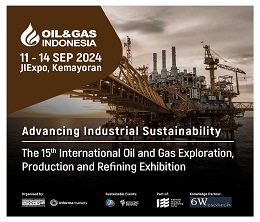Asia Pacific (APAC) Industrial Refrigeration Systems Market (2024-2030) | Analysis, Industry, Growth, Trends, Share, Value, Size, Companies, Forecast, Outlook & Revenue
Market Forecast By Equipment (Compressor, Condensers, Evaporators, Controls & Others (Pumps, Valves, Vessels and Auxiliary Equipment)), By Refrigerants (Ammonia, Carbon Dioxide, Hydro-chlorofluorocarbons, Others (Chlorofluorocarbon, Fluorocarbon, Hydrocarbon, Air and Water)), By Applications (Food & Beverage, Oil & Gas, Chemicals & Petrochemicals & Others), By Countries (India, China, Japan, Australia, Indonesia, Thailand, Malaysia & Rest of Asia Pacific Region) and competitive landscape
| Product Code: ETC002399 | Publication Date: Apr 2020 | Product Type: Report | |
| Publisher: 6Wresearch | No. of Pages: 200 | No. of Figures: 90 | No. of Tables: 30 |
Asia Pacific (APAC) Industrial Refrigeration Systems Market Highlights
| Report Name | Asia Pacific (APAC) Industrial Refrigeration Systems Market |
| Forecast period | 2024-2030 |
| CAGR | 7.2% |
| Growing Sector | Food & Beverage |
Topics Covered in Asia Pacific Industrial Refrigeration Systems Market Report
Asia Pacific Industrial Refrigeration Systems Market report thoroughly covers the market by Equipment, Refrigerants, Applications, and Countries. The market report provides an unbiased and detailed analysis of the ongoing market trends, opportunities/high growth areas, and market drivers, which would help the stakeholders to devise and align their market strategies according to the current and future market dynamics.
Asia Pacific Industrial Refrigeration Systems Market Synopsis
The Asia Pacific Industrial Refrigeration Systems Market is experiencing significant growth, driven by the increasing demand for refrigeration solutions in the food and beverage industry and the expansion of cold chain infrastructure across the region.
According to 6Wresearch, the Asia Pacific Industrial Refrigeration Systems Market is projected to grow at a CAGR of 7.2% from 2024-2030. The food and beverage sector is showing the strongest growth due to the rising need for preserving perishable goods and maintaining food quality. Additionally, the oil & gas and chemicals & petrochemicals industries are contributing to the market growth by utilizing industrial refrigeration systems for various applications. The increasing adoption of natural refrigerants such as ammonia and carbon dioxide is also driving market expansion.
However, the market faces challenges such as the high initial investment required for advanced refrigeration systems and the stringent regulations regarding refrigerants that can impact the market dynamics. Moreover, the complexity of installing and maintaining these systems can act as a barrier, especially for smaller enterprises.
Asia Pacific Industrial Refrigeration Systems Market: Leading Players
Leading players in the Asia Pacific Industrial Refrigeration Systems Market include Johnson Controls, Inc., Emerson Electric Co., and Danfoss A/S. Johnson Controls, Inc. is known for its innovative compressors and control systems that enhance energy efficiency. Emerson Electric Co. offers a wide range of refrigeration solutions, including condensers and evaporators, which are highly valued in various industries. Danfoss A/S specializes in advanced control systems and valves, providing reliable and efficient solutions for industrial refrigeration.
Asia Pacific Industrial Refrigeration Systems Industry: Government Initiatives
Asia Pacific governments are focusing on supporting the industrial refrigeration market via favorable regulations. These measures cover initiatives to develop an enabling environment of subsidies and incentives for energy-efficient refrigeration systems, natural working fluids in cooling solutions. Moreover, the requirement of environmental norms and regulations practices are promoting for cleaner emission control which is also set to propel towards eco-friendly refrigerants. Additionally, regulations aimed at reducing greenhouse gas emissions are encouraging the shift towards eco-friendly refrigerants. Investments in cold chain infrastructure and food storage facilities are also driving market growth, ensuring the preservation of perishable goods and enhancing food security. Furthermore, government policies focused on industrial growth and technological advancements are expected to boost the adoption of advanced refrigeration systems.
Future Insights of the Market
The Asia Pacific Industrial Refrigeration Systems Market is anticipated to witness significant growth over the next five years. Market growth is expected to be driven by technological advancements such as IoT and automation in refrigeration systems. Growing inclination towards energy-efficient and environmentally friendly refrigeration solutions is likely to influence the sales of advanced models. In addition to this, the food and beverage industry will maintain its prominence as more businesses seek reliable refrigeration systems to ensure food safety and quality. Moreover, growth opportunities are significant within the chemicals & petrochemicals sector as the need for precise temperature control in processing and storage increases. In brief, growth will be driven by innovation and sustainability-oriented focus in the market.
Market Segmentation By Equipment
According to Ravi Bhandari, Research Head, 6Wresearch, compressors are leading the market due to their essential role in various refrigeration applications, ensuring efficient cooling and preservation.
Market Segmentation By Refrigerants
High demand for ammonia and carbon dioxide refrigerants due to their eco-friendly properties and effective cooling capabilities in industrial refrigeration systems.
Market Segmentation By Applications
The food & beverage sector holds the largest share, driven by the need for preserving perishable products and maintaining food quality, along with the expansion of cold chain infrastructure.
Market Segmentation By Countries
China is the leading country due to its robust industrial base and increasing adoption of advanced refrigeration systems across various sectors.
Key Attractiveness of the Report
- 10 Years of Market Numbers.
- Historical Data Starting from 2020 to 2023.
- Base Year: 2023
- Forecast Data until 2030.
- Key Performance Indicators Impacting the Market.
- Major Upcoming Developments and Projects.
Key Highlights of the Report
- Asia Pacific Industrial Refrigeration Systems Market Overview
- Asia Pacific Industrial Refrigeration Systems Market Outlook
- Asia Pacific Industrial Refrigeration Systems Market Forecast
- Historical Data of Asia Pacific Industrial Refrigeration Systems Market Revenues for the Period 2020-2030
- Asia Pacific Industrial Refrigeration Systems Market Size and Asia Pacific Industrial Refrigeration Systems Market Forecast of Revenues, Until 2030
- Historical Data of Asia Pacific Industrial Refrigeration Systems Market Revenues, By Equipment, for the Period 2020-2030
- Market Size & Forecast of Asia Pacific Industrial Refrigeration Systems Market Revenues, By Equipment, Until 2030
- Historical Data of Asia Pacific Industrial Refrigeration Systems Market Revenues, By Refrigerants, for the Period 2020-2030
- Market Size & Forecast of Asia Pacific Industrial Refrigeration Systems Market Revenues, By Refrigerants, Until 2030
- Historical Data of Asia Pacific Industrial Refrigeration Systems Market Revenues, By Applications, for the Period 2020-2030
- Market Size & Forecast of Asia Pacific Industrial Refrigeration Systems Market Revenues, By Applications, Until 2030
- Historical Data of India Industrial Refrigeration Systems Market Revenues, for the Period 2020-2030
- Market Size & Forecast of India Industrial Refrigeration Systems Market Revenues, Until 2030
- Historical Data of China Industrial Refrigeration Systems Market Revenues, for the Period 2020-2030
- Market Size & Forecast of China Industrial Refrigeration Systems Market Revenues, Until 2030
- Historical Data of JAPAN Industrial Refrigeration Systems Market Revenues, for the Period 2020-2030
- Market Size & Forecast of JAPAN Industrial Refrigeration Systems Market Revenues, Until 2030
- Historical Data of Australia Industrial Refrigeration Systems Market Revenues, for the Period 2020-2030
- Market Size & Forecast of Australia Industrial Refrigeration Systems Market Revenues, Until 2030
- Historical Data of Thailand Industrial Refrigeration Systems Market Revenues, for the Period 2020-2030
- Market Size & Forecast of Thailand Industrial Refrigeration Systems Market Revenues, Until 2030
- Historical Data of Indonesia Industrial Refrigeration Systems Market Revenues, for the Period 2020-2030
- Market Size & Forecast of Indonesia Industrial Refrigeration Systems Market Revenues, Until 2030
- Historical Data of Malaysia Industrial Refrigeration Systems Market Revenues, for the Period 2020-2030
- Market Size & Forecast of Malaysia Industrial Refrigeration Systems Market Revenues, Until 2030
- Market Drivers and Restraints
- Asia Pacific Industrial Refrigeration Systems Market Price Trends
- Asia Pacific Industrial Refrigeration Systems Market Trends and Industry Life Cycle
- Porter’s Five Force Analysis
- Market Opportunity Assessment
- Asia Pacific Industrial Refrigeration Systems Market Share, By Players
- Asia Pacific Industrial Refrigeration Systems Market Share, By Regions
- Asia Pacific Industrial Refrigeration Systems Market Overview on Competitive Benchmarking
- Company Profiles
- Key Strategic Recommendations
Market Scope and Segmentation
The report provides a detailed analysis of the following market segments:
By Equipment
- Compressor
- Condensers
- Evaporators
- Controls
- Others (Pumps, Valves, Vessels, and Auxiliary Equipment)
By Refrigerants
- Ammonia
- Carbon Dioxide
- Hydro-Chlorofluorocarbons
- Others (Chlorofluorocarbon, Fluorocarbon, Hydrocarbon, Air, and Water)
By Applications
- Food & Beverage
- Oil & Gas
- Chemicals & Petrochemicals
- Others
By Countries
- India
- China
- Japan
- Australia
- Indonesia
- Thailand
- Malaysia
- Rest Of Asia Pacific Region
Asia Pacific (APAC) Industrial Refrigeration Systems Market (2024-2030): FAQs
| 1 Executive Summary |
| 2 Introduction |
| 2.1 Report Description |
| 2.2 Key Highlights of The Report |
| 2.3 Market Scope & Segmentation |
| 2.4 Research Methodology |
| 2.5 Assumptions |
| 3 Asia Pacific Industrial Refrigeration Systems Market Overview |
| 3.1 Asia Pacific Industrial Refrigeration Systems Market Revenues, 2020-2030F |
| 3.2 Asia Pacific Industrial Refrigeration Systems Market Revenue Share, By Equipment, 2020 & 2030F |
| 3.3 Asia Pacific Industrial Refrigeration Systems Market Revenue Share, By Refrigerants, 2020 & 2030F |
| 3.4 Asia Pacific Industrial Refrigeration Systems Market Revenue Share, By Applications, 2020 & 2030F |
| 3.5 Asia Pacific Industrial Refrigeration Systems Market Revenue Share, By Countries, 2020 & 2030F |
| 3.6 Asia Pacific Industrial Refrigeration Systems Market Industry Life Cycle |
| 3.7 Asia Pacific Industrial Refrigeration Systems Market- Porter’s Five Forces |
| 4 Asia Pacific Industrial Refrigeration Systems Market Dynamics |
| 4.1 Impact analysis |
| 4.2 Market Drivers |
| 4.3 Market Restraints |
| 5 Asia Pacific Industrial Refrigeration Systems Market Trends |
| 6 Asia Pacific Industrial Refrigeration Systems Market Overview, By Equipment |
| 6.1 Asia Pacific Industrial Refrigeration Systems Market Revenues, By Compressor, 2020-2030F |
| 6.2 Asia Pacific Industrial Refrigeration Systems Market Revenues, By Condensers, 2020-2030F |
| 6.3 Asia Pacific Industrial Refrigeration Systems Market Revenues, By Evaporators, 2020-2030F |
| 6.4 Asia Pacific Industrial Refrigeration Systems Market Revenues, By Controls, 2020-2030F |
| 6.5 Asia Pacific Industrial Refrigeration Systems Market Revenues, By Others, 2020-2030F |
| 7 Asia Pacific Industrial Refrigeration Systems Market Overview, By Refrigerants |
| 7.1 Asia Pacific Industrial Refrigeration Systems Market Revenues, By Ammonia, 2020-2030F |
| 7.2 Asia Pacific Industrial Refrigeration Systems Market Revenues, By Carbon Dioxide, 2020-2030F |
| 7.3 Asia Pacific Industrial Refrigeration Systems Market Revenues, By Hydro-chlorofluorocarbons, 2020-2030F |
| 7.4 Asia Pacific Industrial Refrigeration Systems Market Revenues, By Others, 2020-2030F |
| 8 Asia Pacific Industrial Refrigeration Systems Market Overview, By Applications |
| 8.1 Asia Pacific Industrial Refrigeration Systems Market Revenues, By Food & Beverages, 2020-2030F |
| 8.2 Asia Pacific Industrial Refrigeration Systems Market Revenues, By Oil & Gas, 2020-2030F |
| 8.3 Asia Pacific Industrial Refrigeration Systems Market Revenues, By Chemicals & Petrochemicals, 2020-2030F |
| 8.4 Asia Pacific Industrial Refrigeration Systems Market Revenues, By Others, 2020-2030F |
| 9 India Industrial Refrigeration Systems Market Overview |
| 9.1 India Industrial Refrigeration Systems Market Revenues, 2020-2030F |
| 9.2 India Industrial Refrigeration Systems Market Revenues, By Equipment, 2020-2030F |
| 9.3 India Industrial Refrigeration Systems Market Revenues, By Refrigerants, 2020-2030F |
| 9.4 India Industrial Refrigeration Systems Market Revenues, By Applications, 2020-2030F |
| 10 China Industrial Refrigeration Systems Market Overview |
| 10.1 China Industrial Refrigeration Systems Market Revenues, 2020-2030F |
| 10.2 China Industrial Refrigeration Systems Market Revenues, By Equipment, 2020-2030F |
| 10.3 China Industrial Refrigeration Systems Market Revenues, By Refrigerants, 2020-2030F |
| 10.4 China Industrial Refrigeration Systems Market Revenues, By Applications, 2020-2030F |
| 11 Japan Industrial Refrigeration Systems Market Overview |
| 11.1 Japan Industrial Refrigeration Systems Market Revenues, 2020-2030F |
| 11.2 Japan Industrial Refrigeration Systems Market Revenues, By Equipment, 2020-2030F |
| 11.3 Japan Industrial Refrigeration Systems Market Revenues, By Refrigerants, 2020-2030F |
| 11.4 Japan Industrial Refrigeration Systems Market Revenues, By Applications, 2020-2030F |
| 12 Australia Industrial Refrigeration Systems Market Overview |
| 12.1 Australia Industrial Refrigeration Systems Market Revenues, 2020-2030F |
| 12.2 Australia Industrial Refrigeration Systems Market Revenues, By Equipment, 2020-2030F |
| 12.3 Australia Industrial Refrigeration Systems Market Revenues, By Refrigerants, 2020-2030F |
| 12.4 Australia Industrial Refrigeration Systems Market Revenues, By Applications, 2020-2030F |
| 13 Thailand Industrial Refrigeration Systems Market Overview |
| 13.1 Thailand Industrial Refrigeration Systems Market Revenues, 2020-2030F |
| 13.2 Thailand Industrial Refrigeration Systems Market Revenues, By Equipment, 2020-2030F |
| 13.3 Thailand Industrial Refrigeration Systems Market Revenues, By Refrigerants, 2020-2030F |
| 13.4 Thailand Industrial Refrigeration Systems Market Revenues, By Applications, 2020-2030F |
| 14 Indonesia Industrial Refrigeration Systems Market Overview |
| 14.1 Indonesia Industrial Refrigeration Systems Market Revenues, 2020-2030F |
| 14.2 Indonesia Industrial Refrigeration Systems Market Revenues, By Equipment, 2020-2030F |
| 14.3 Indonesia Industrial Refrigeration Systems Market Revenues, By Refrigerants, 2020-2030F |
| 14.4 Indonesia Industrial Refrigeration Systems Market Revenues, By Applications, 2020-2030F |
| 15 Malaysia Industrial Refrigeration Systems Market Overview |
| 15.1 Malaysia Industrial Refrigeration Systems Market Revenues, 2020-2030F |
| 15.2 Malaysia Industrial Refrigeration Systems Market Revenues, By Equipment, 2020-2030F |
| 15.3 Malaysia Industrial Refrigeration Systems Market Revenues, By Refrigerants, 2020-2030F |
| 15.4 Malaysia Industrial Refrigeration Systems Market Revenues, By Applications, 2020-2030F |
| 16 Rest of Asia Pacific Industrial Refrigeration Systems Market Overview |
| 16.1 Rest of Asia Pacific Industrial Refrigeration Systems Market Revenues, 2020-2030F |
| 17 Asia Pacific Industrial Refrigeration Systems Market Key Performance Indicators |
| 18 Asia Pacific Industrial Refrigeration Systems Market Opportunity Assessment |
| 18.1 Asia Pacific Industrial Refrigeration Systems Market Opportunity Assessment, By Equipment, 2026F |
| 18.2 Asia Pacific Industrial Refrigeration Systems Market Opportunity Assessment, By Refrigerants, 2026F |
| 18.3 Asia Pacific Industrial Refrigeration Systems Market Opportunity Assessment, By Applications, 2026F |
| 19 Asia Pacific Industrial Refrigeration Systems Market Competitive Landscape |
| 19.1 Asia Pacific Industrial Refrigeration Systems Market Revenue Share, By Companies, 2023 |
| 19.1.1 Japan Industrial Refrigeration Systems Market Revenue Share, By Companies, 2023 |
| 19.1.2 Indonesia Industrial Refrigeration Systems Market Revenue Share, By Companies, 2023 |
| 19.1.3 Malaysia Industrial Refrigeration Systems Market Revenue Share, By Companies, 2023 |
| 19.1.4 India Industrial Refrigeration Systems Market Revenue Share, By Companies, 2023 |
| 19.1.5 Australia Industrial Refrigeration Systems Market Revenue Share, By Companies, 2023 |
| 19.1.6 Thailand Industrial Refrigeration Systems Market Revenue Share, By Companies, 2023 |
| 19.1.7 China Industrial Refrigeration Systems Market Revenue Share, By Companies, 2023 |
| 19.2 Asia Pacific Industrial Refrigeration Systems Market Competitive Benchmarking, By Operating Parameters |
| 20 Company Profiles |
| 21 Key Recommendations |
| 22 Disclaimer |
- Single User License$ 4,560
- Department License$ 5,055
- Site License$ 5,595
- Global License$ 6,000
Search
Related Reports
- India Video Surveillance Market (2024-2030) | Size, industry, Share, Trends, Revenue, Analysis, Forecast, Growth, Value, Outlook
- India Air Conditioner (AC) Market (2024-2030) | Share, Size, Growth, Industry, Segmentation, Trends, Value, Revenue, Analysis & Outlook
- Poland Printing Market (2024-2030) | Trends, Companies, Share, Industry, Value, Growth, Analysis, Outlook, Forecast, Size & Revenue
- Argentina Data storage devices Market (2024-2030) | Size, Share, Industry, Trends, Growth, Value, Revenue, Analysis & Outlook
- UAE Cyber Security Market (2024-2030) | industry, Size, Share, Revenue, Analysis, Forecast, Growth, Trends & Outlook
- Professional Headset Market (2024-2030) | Companies, Outlook, Trends, Value, Forecast, Size, Analysis, Share, Growth, Revenue & Industry
- Polyurethane Market (2024-2030) | Trends, Companies, Analysis, Size, Share, Industry, Revenue, Outlook, Forecast, Value & Growth
- Orphan Drugs Market (2024-2030) | Outlook, Revenue, Value, Companies, Analysis, Size, Share, Forecast, Industry, Growth & Trends
- Military Robotic and Autonomous (RAS) Systems Market (2024-2030) | Outlook, Size, Forecast, Value, Trends, Growth, Industry, Analysis, Revenue, Share & Companies
- Infectious Disease Point-of-Care Testing Market (2024-2030) | Share, Revenue, Growth, Forecast, Analysis, Trends, Value, Companies, Industry, Outlook, Size
Industry Events and Analyst Meet
Our Clients
Whitepaper
- Middle East & Africa Commercial Security Market Click here to view more.
- Middle East & Africa Fire Safety Systems & Equipment Market Click here to view more.
- GCC Drone Market Click here to view more.
- Middle East Lighting Fixture Market Click here to view more.
- GCC Physical & Perimeter Security Market Click here to view more.
6WResearch In News
- India's Printer Market Faces 20.7% Decline in Q4 2023: Epson and HP Lead Amidst Downturn
- India's Camera Market Sees 8.9% Decline in Q4 2023; Canon Leads with 38.4% Share
- Doha a strategic location for EV manufacturing hub: IPA Qatar
- Demand for luxury TVs surging in the GCC, says Samsung
- Empowering Growth: The Thriving Journey of Bangladesh’s Cable Industry
- The future of gaming industry in the Philippines













